|
|
|
|
|
27 litres in a car? Look no further than Charlie Broomfield's SD1 which has been an ongoing project for AGES. His car uses a Meteor engine from a tank rather than the supercharged Merlin lump. He is converting it to run Merlin cams which is a massive job as they run the opposite way to the Meteor's. Still, a fabulous (and bonkers) bit of kit. 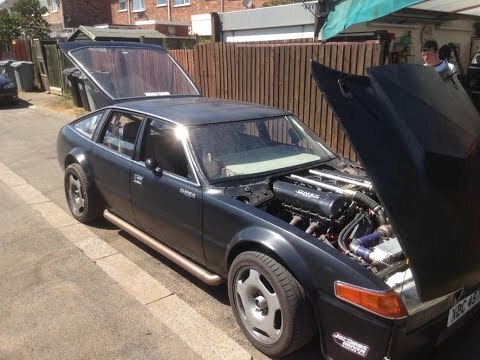 |
| |
Last Edit: May 6, 2019 14:46:41 GMT by mrbounce
|
|
|
|
vulgalour
Club Retro Rides Member
Posts: 7,286
Club RR Member Number: 146
|
|
|
|
You get some idea of just how enormous the engine is in that when you spot how far back the door mirrors are and how deep the dashboard is. You're pretty much forced to drive the thing from the back seat. I could link to the tank here, but instead I'm going to link you to the other Rover Meteor, a car that was built for a very short period in the early thirties. Presumably it was named for the Meteor Works where it was built in Coventry. A very well appointed car for its day and perhaps one of the vehicles that established Rover as a producer of well-built, sturdy vehicles suitable for the middle classes.  |
| |
|
|
|
|
|
|
|
Meteor was a brand created by Ford following World War Two to give its Lincoln-Mercury dealers in Canada an entry in the low-priced field. Essentially a Ford with unique trim and a Mercury dashboard, Meteors sold in respectable numbers for a couple of decades. I give you a 1954 Meteor Niagra: 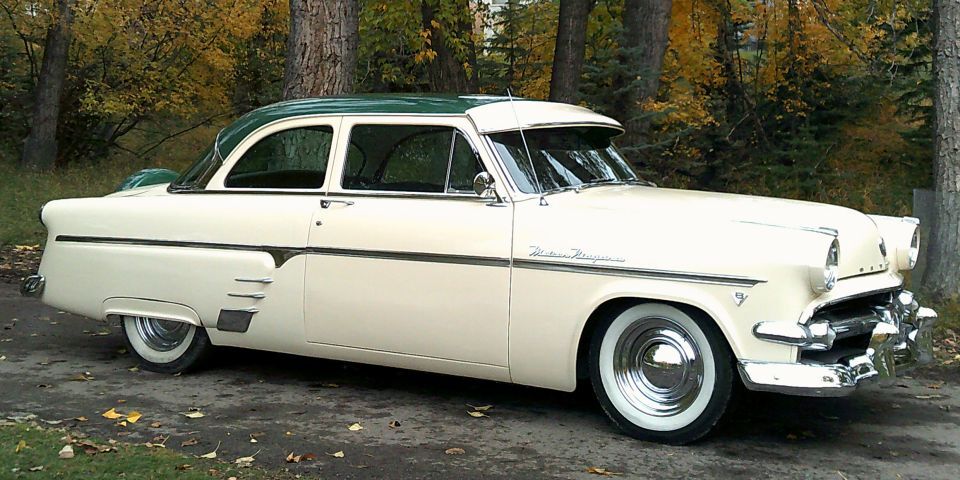 |
| |
74 Mk1 Escort 1360, 1971 Vauxhall Victor SL2000 Estate.
|
|
vulgalour
Club Retro Rides Member
Posts: 7,286
Club RR Member Number: 146
|
|
|
|
Niagra is famous for its waterfalls. Here's an Oldsmobile Cutlass in a fantastic colour with a waterfall grille.  |
| |
|
|
|
|
|
|
|
To paraphrase Mick Dundee "That's not a waterfall grille, this is a waterfall grille"  Have a Triumph Dolomite. 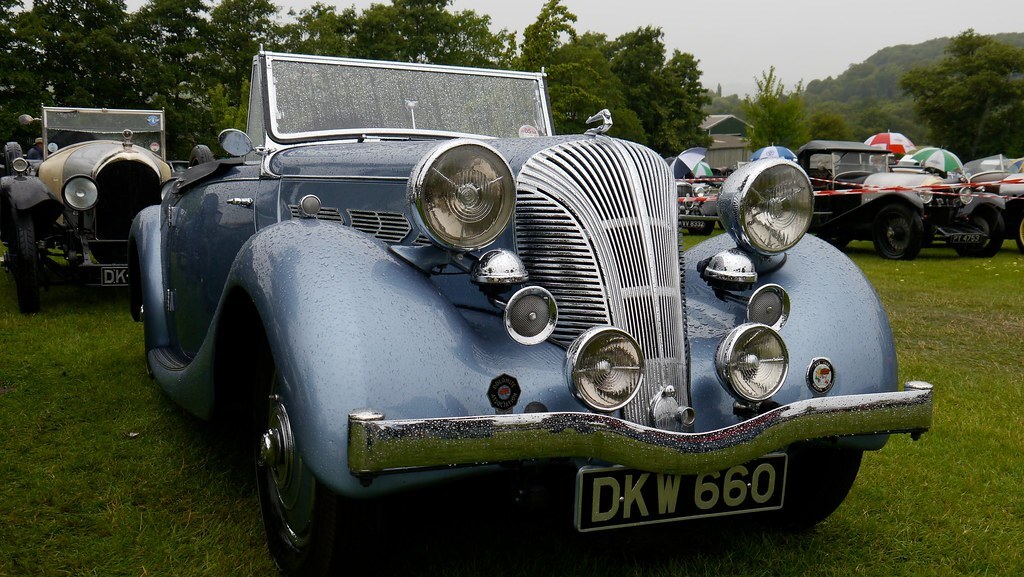 |
| |
74 Mk1 Escort 1360, 1971 Vauxhall Victor SL2000 Estate.
|
|
|
|
|
|
|
The plate says DKW. Which was a German car manufacturer. ( DKW stands for Dampf Kraft Wagen, or "steam-powered car", which is how the company started.) They used 3 cyl 2 stroke engines that were successful in racing for a while, in tin tops and Formula Junior. So here is a pic of a Dutch built DKW powered Hirondelle Formula Junior. 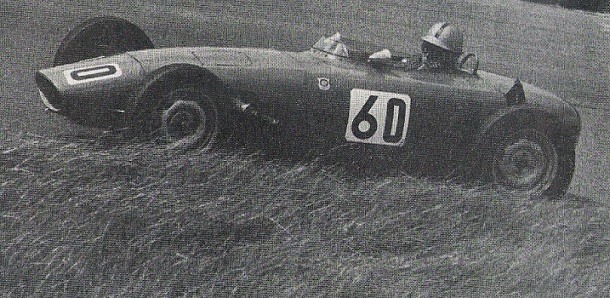 |
| |
|
|
oilit
Part of things
 
Posts: 234
|
|
|
|
On December 1, 1955. The Saab 93 was launched, and was also powered by a longitudinally-mounted three-cylinder 748 cc Saab two-stroke engine giving 33 hp (25 kW) - which was based on the DKW design. 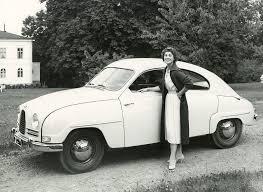 |
| |
Last Edit: May 7, 2019 5:36:03 GMT by oilit
|
|
|
|
|
|
|
The Saab is what happens when an aircraft company starts building cars. ( Wind tunnel pic is I believe of a 92) 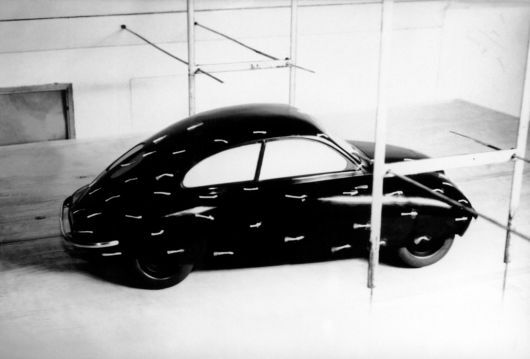 Same as the Bristol, also a aircraft company that started building cars. Pic is of a 450 at LeMans , the 450 was also developed in a windtunnel 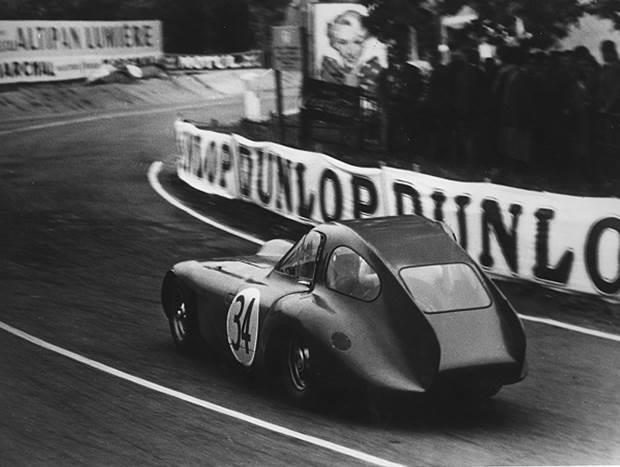 |
| |
|
|
vulgalour
Club Retro Rides Member
Posts: 7,286
Club RR Member Number: 146
|
|
|
|
We have Wunibald Kamm to thank for automotive wind tunnels, since he was the first to design and make use of one. His design principles, literally shaped by the results in the wind tunnel, still influence car design today with that smooth tapered rear that becomes a fairly bluff drop to the floor. You really can't argue with science on this one. The first car to get the treatment was from 1938 in the form of the BMW 328 based Kamm Coupé.  You'll see the same 'kamm back' or 'kamm tail' treatment on a lot of cars, usually sports cars, from a wide array of manufacturers. In the 70s, that suddenly chopped off rear panel was a common sight. |
| |
Last Edit: May 7, 2019 15:06:57 GMT by vulgalour
|
|
|
|
|
|
|
The BMW 328 based Kamm Coupé was a pre war streamlined racecar designed by German pioneer automotive aerodynamicist Wunibalt Kamm. The Mercedes SSKL "Gurke" was a pre war streamlined racecar designed by the other German pioneer automotive aerodynamicist Reinhard von Koenig-Fachsenfeld. It was based on the regular SSKL racecar, it raced at Avus in 1932 with Manfred von Brauchitsch behind the wheel. This was really the start of the scientific approach to aerodynamics in GP racing which was one of the things that made the silver arrows unbeatable in a couple of years. 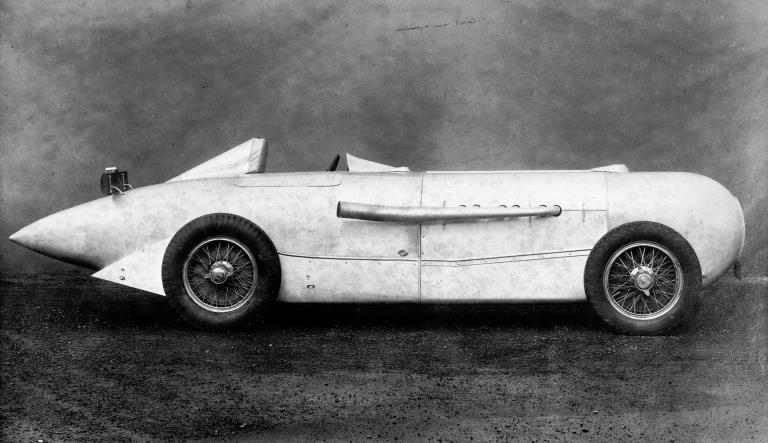 |
| |
|
|
vulgalour
Club Retro Rides Member
Posts: 7,286
Club RR Member Number: 146
|
|
|
|
When you see that, it's a lot easier to understand where bellytank racers come from. It's the same principles of aerodynamics combined with making use of unwanted surplus. After WW2 there was lots of surplus stuff lying about and one thing was the range-extending fuel cells for planes, also known as belly tanks. If you wanted to go REALLY fast in the 40s and 50s, you needed something that could fit around you and the engine as closely as possible, be as lightweight and aerodynamic as possible and, ideally, be cheap and easy to get hold of. I can only begin to imagine how exhilirating and terrifying it must be to pilot one of these things at any speed, let alone the speeds some of them achieve across the Bonneville Salt Lake Flats.  Many of these were built using Model T chassis and other components, since they were also cheap and plentiful at the time, so while I've just linked to one of many of these marvellous machines above, the Ford Model T is my vehicle link of choice here.  |
| |
|
|
|
|
|
|
|
Vulgalour, this is not meant as a link, but just some more info on the Silver arrow to Bonneville LSR racers link you just made. I had noticed that some early LSR cars looked a lot like the pre war Silver Arrows, and some years ago when the Hot Rod Heritage site opened, we got to ask some of the Bonneville pioneers some questions. So I asked about that. Turns out the resemblance was no coincidence. They had a book that explained the pre war German cars in detail. And they applied the aerodynamic shapes and theories to their own racecars. I thought that was a fascinating piece of info... 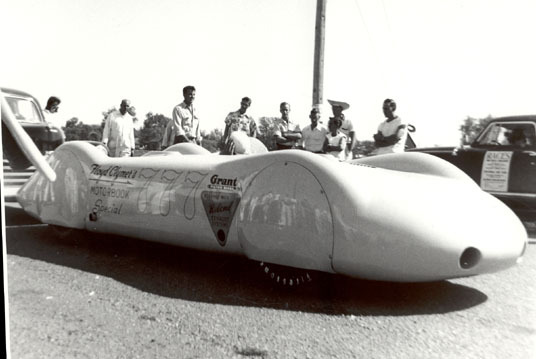   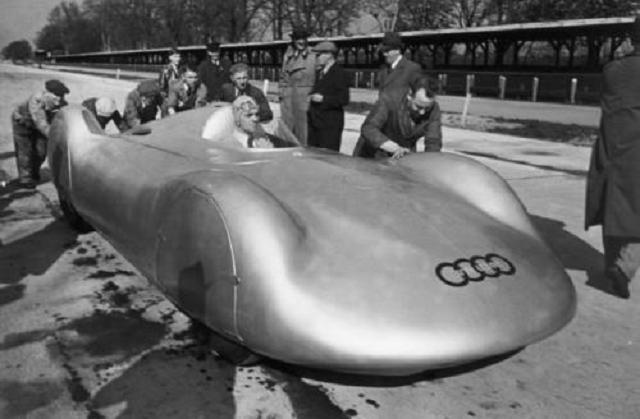 |
| |
|
|
|
|
|
|
|
The myth is that you could only buy a Model T in Black, with the famous Henry Ford quote, you can buy them in any color, as long as its black. This is only partially true. He used a certain paint a lot when the assembly line sped up too much for the paint dry time to keep up. I think the fast drying paint was called China Black. Once that problem was solved, you could get them in different colors. People seem to think Ferrari's only come in red, but this one ( bought new by Steve McQueen) proves that isn't true either... 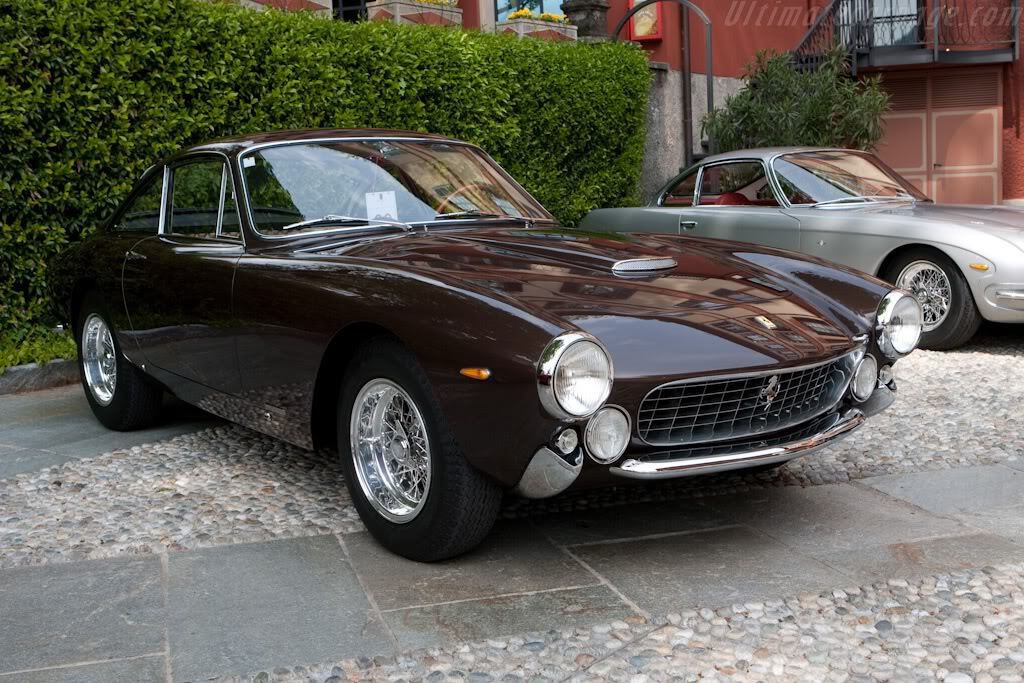 |
| |
|
|
|
|
|
|
|
I cannot go past a Ferrari 250 California on a page that mentions in detail the Kamm tail design (and what an informative page this has been!) withour being immediately drawn to post the Ferrari 250 "Breadvan". A one off, made by - and here begins the many things the next link could come from, on top of a double-link  - the engineer Giotto Bizzarrini, with the financial backing of ATS, the company formed out of ex-Ferrari employees, financed by Count Volpi, a young man of much inherited wealth, who after being refused two 250GTOs to go racing with by Enzo, commissioned this build. They based it on a 1961 SWB 250 Competizione, which had been previously successful under the driving prowess of the immensely skilled Olivier Gendebien, and Lucien Bianchi, the great-uncle of Jules (both of whom oddly died in similar circumstances). That's maybe enough, but here is that wonderful car.  |
| |
|
|
|
|
|
|
|
|
Yes.
Basically, Count Volpi hired the man behind the GTO.
To out-GTO the GTO...
It almost did it, if it wouldn't have broken down.
And if it also would have had the GTO 5 speed instead of the SWB 4 speed, it would have been no contest...
Awesome car...
|
| |
|
|
|
|
|
|
|
The Breadvan is related to the 1967 Mirage M1, which is also a radically improved Non Works version of the older model Works racer. And while the factories went on with a new car, these improved older cars were competitive. Although, in both cases, not at LeMans, the years they were introduced. 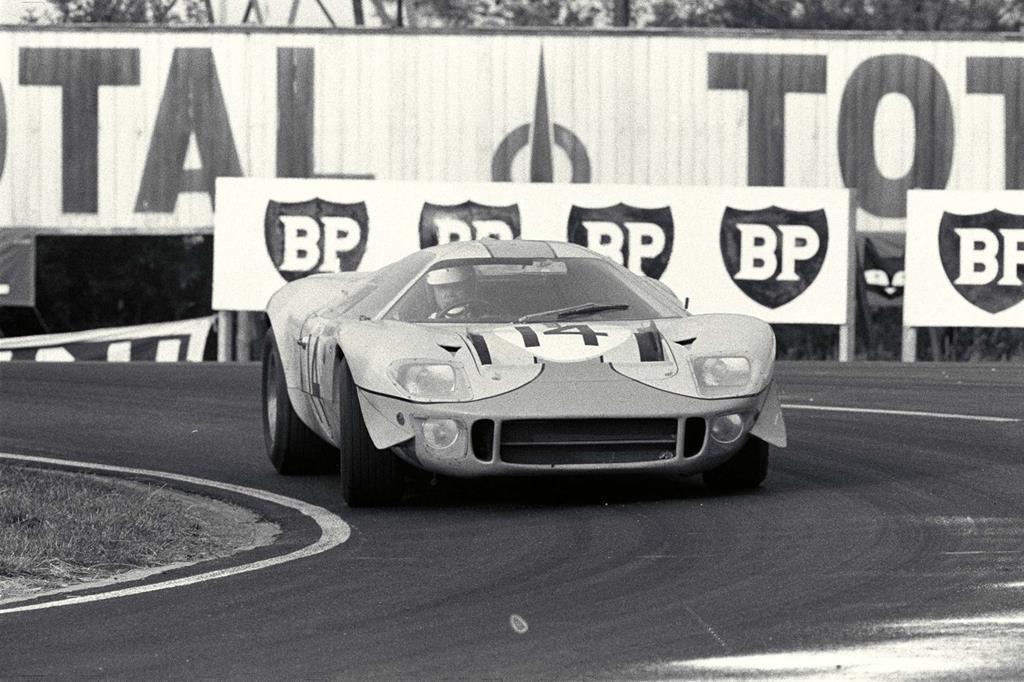 |
| |
|
|
oilit
Part of things
 
Posts: 234
|
|
|
|
|
wow indeed I have learnt a lot from this page - thank you everyone !
|
| |
|
|
vulgalour
Club Retro Rides Member
Posts: 7,286
Club RR Member Number: 146
|
|
|
|
A performance car built in Slough is something the Mirage M1 shares with the Peerless GT.  |
| |
|
|
|
|
|
|
|
Bernie Rodger designed the prototype for company founders John Gordon and James Byrnes. He later went on to make an improved version called the Warwick. And John Gordon later used the Peerless as the basis for the Gordon-Keeble. 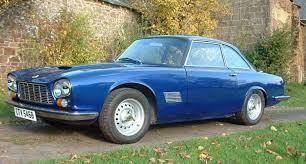 |
| |
|
|
|
|
|
May 12, 2019 10:41:41 GMT
|
Gordon-Keeble was a British car marque, made first in Slough, then Eastleigh, and finally in Southampton, between 1964 and 1967. The marque's badge was unusual in featuring a tortoise — a pet tortoise walked into the frame of an inaugural photo-shoot, taken in the grounds of the makers. Wheelbase: 259.1 cm Engine: 5.4 Chevrolet 327 V8 Body style: 2-door saloon Class: Grand tourer Designer: Giorgetto Giugiaro at Bertone The Engine used in the Gordon-Keeble a 5.4 Chevrolet 327 V8 was apparently also used in the Opel Diplomat 5.4 Coupé.  The first Opel Diplomat V8 Coupé rolled off the assembly line of body maker Karmann in Osnabrück, Germany in the summer of 1965. The top Opel was virtually handmade by the workers at Karmann. Since only 347 of the 5.4 Coupes were ever made, this handmade status would not be a problem in terms of satisifying demand, but it did conspire to drive the high price even higher. The price was approximately 25,000 DM, The Opel Diplomat V8 Coupé was the absolute zenith of the Diplomat range and came with a 5.4-liter V8 engine –advertised as the same engine that was used in the Chevrolet Corvette at the time and paired with the GM two-speed automatic transmission, the 230hp V8 engine pushed the Coupé from zero to 100 in under 10 seconds. That was incredibly fast for the era, and gave the Diplomat 5.4 owner bragging rights everywhere he went in Europe. Maximum speed was 206 km/h (125 mph), which was a pretty good top end for a two-speed transmission. 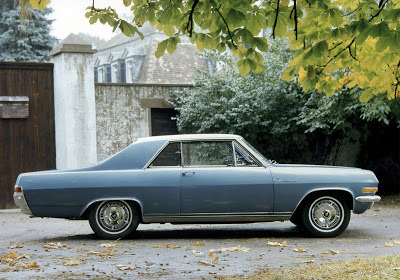 |
| |
|
|


























 - the engineer Giotto Bizzarrini, with the financial backing of ATS, the company formed out of ex-Ferrari employees, financed by Count Volpi, a young man of much inherited wealth, who after being refused two 250GTOs to go racing with by Enzo, commissioned this build.
- the engineer Giotto Bizzarrini, with the financial backing of ATS, the company formed out of ex-Ferrari employees, financed by Count Volpi, a young man of much inherited wealth, who after being refused two 250GTOs to go racing with by Enzo, commissioned this build.




